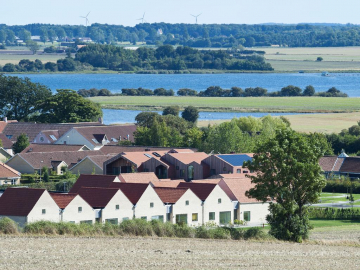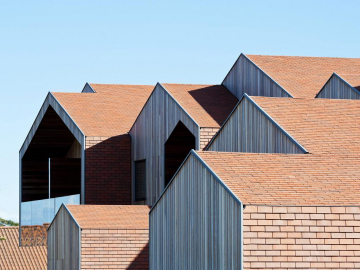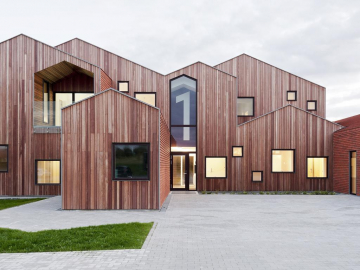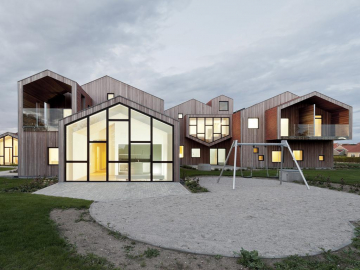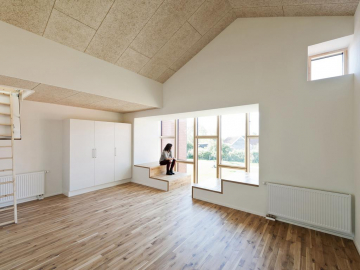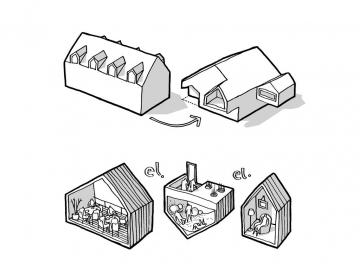Childrens Home of the Future
The Childrens Home of the Future is a pioneering project for a new type of 24-hour care centre for marginalized children and teenagers. The project combines the traditional homes safe environment with new pedagogical ideas and conceptions of what a modern childrens home is and which needs it should fulfil.
The vision for the new institution is to establish a care centre that encourages social relations and a sense of community while at the same time accommodating the childrens individual needs a place that they are proud to call their home and prepares them for their future path in life in the best possible way. The physical surroundings reflect a practice-oriented pedagogic approach, in which the architecture actively supports the staffs daily work with children, who struggle with behavioural, social and mental health problems. The architectural design concept plays with familiar elements and shapes to create a homely environment in a modern and sustainable building that focuses on the residents and special needs.
The design for the new childrens home is based on the familiar basic shapes of the typical Danish home: the classic pitched-roof house and the dormer windows. The two elements are used in their most simplified form to create a recognisable exterior appearance and integrate the building into the surrounding residential area. They make up the projects underlying architectural DNA, which expresses inclusion, diversity and an atmosphere of safety. This is reinforced by the use of domestic building materials, including clay tiles and wood cladding reminiscent of conventional weatherboarding.
By combining and applying the basic elements in a new and playful way the care centre is highlighted as an extraordinary place with its own identity. The basic geometric shape is modified by the distinctive dormer profiles in order to add spatial variation and functional flexibility to the interior organisation. The varying sizes and orientations of these bonus spaces allow for a wide range of applications such as reading and movie corners, a study for homework, areas for painting and crafting, common rooms for festive events etc.
The overall organisation consists of four interconnected houses. The elongated wings of the traditional institutional building are split up and contracted to form a compact building with offset volumes and to reduce the building scale. The overall organisation provides each age group with a self-contained, varied unit or its own house in connection with a central unit for flexible use. The layout aims at providing the residents with a sense of belonging to their unit a homely base where they can retreat alone or in smaller groups.
An optimized energy performance and indoor climate. By combining both passive (e.g. insulation, compact volume, inflow of daylight) and active (solar panels) solutions the buildings energy demand of 30,4 kWh/m2 per year meets the demands of the Danish Low Energy Class 2015 standards. By considering adaptability as a vital element it is able to adapt to changing future needs with a minimal use of resources. The rational organization ensures the personnels working procedures are incorporated effectively in the daily routines, thereby freeing time more home, less institution.

